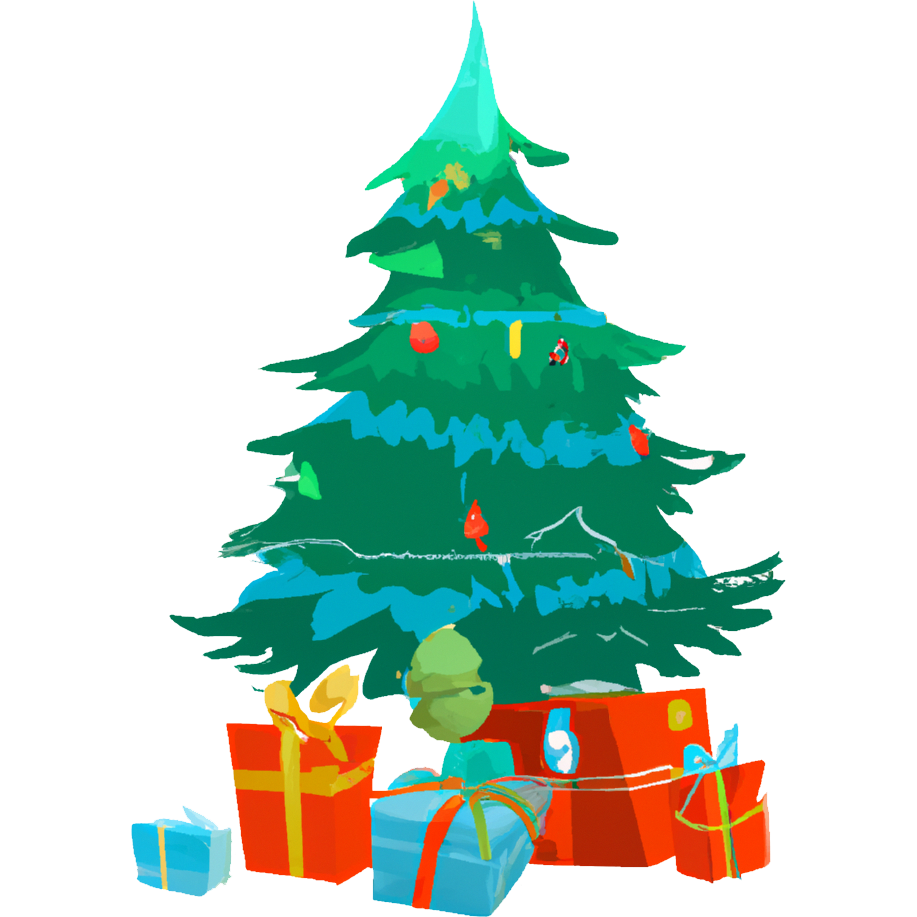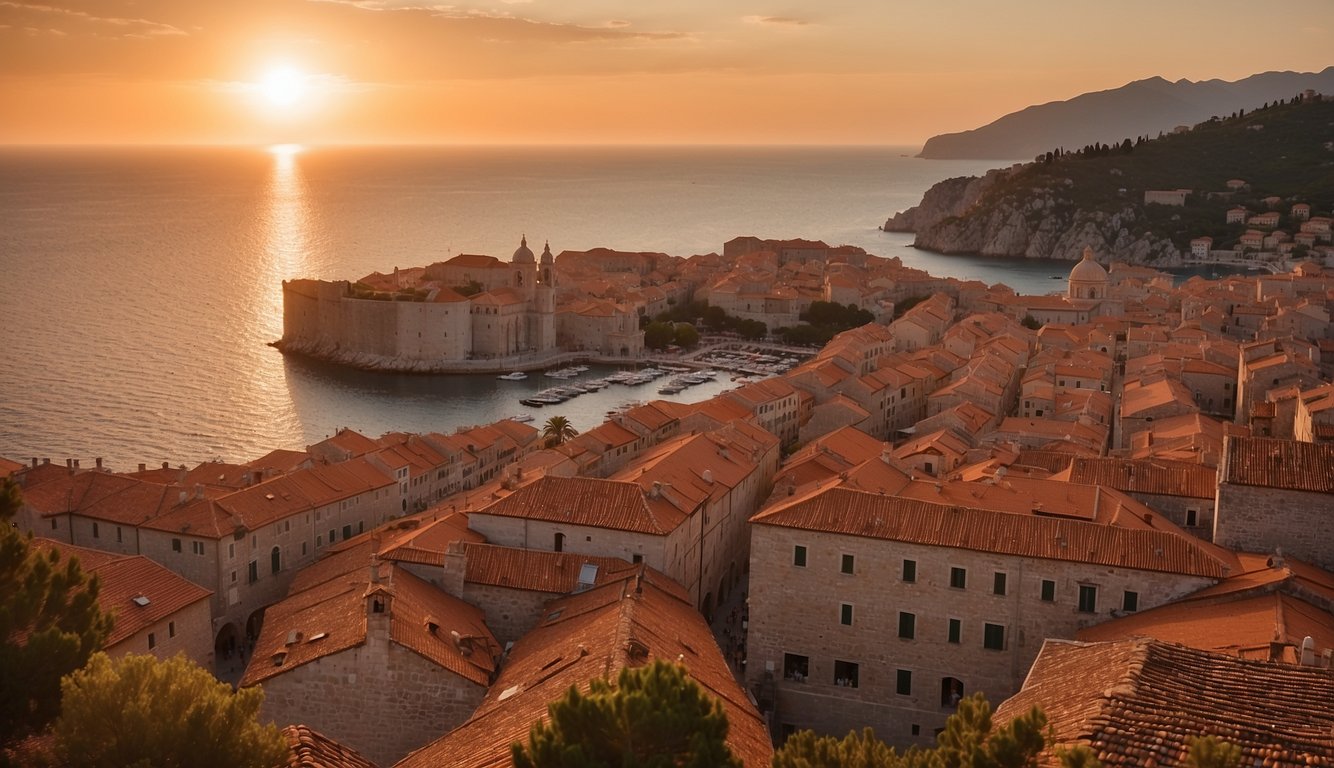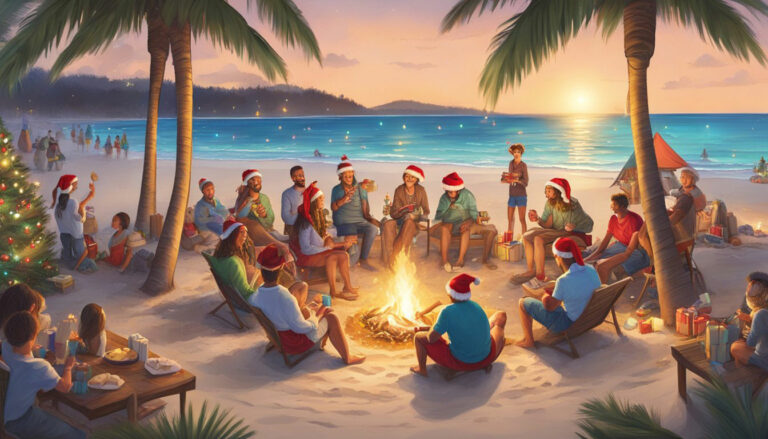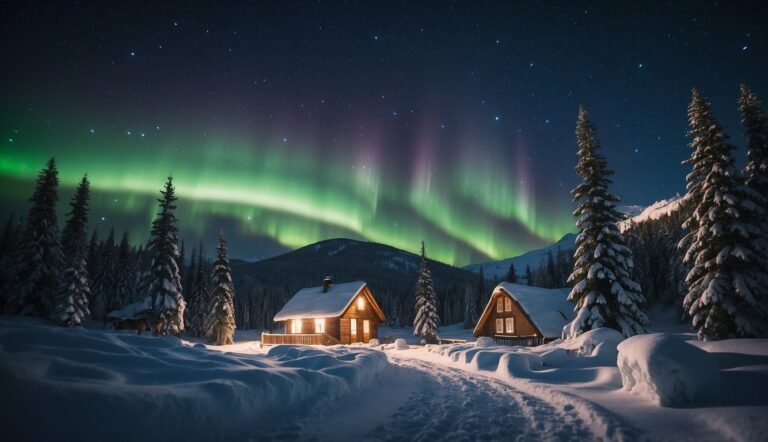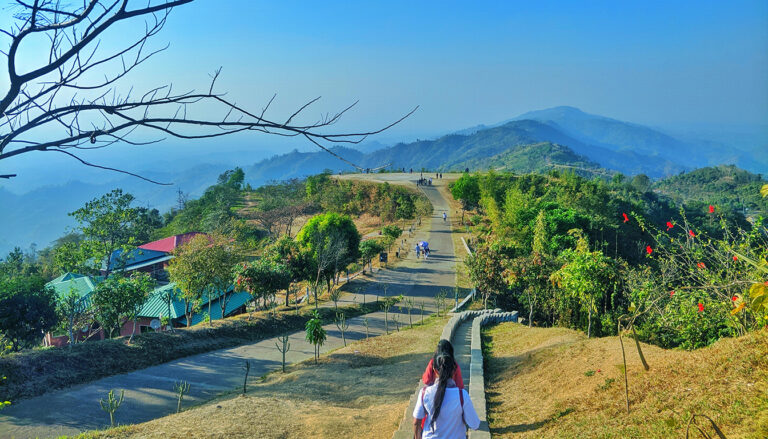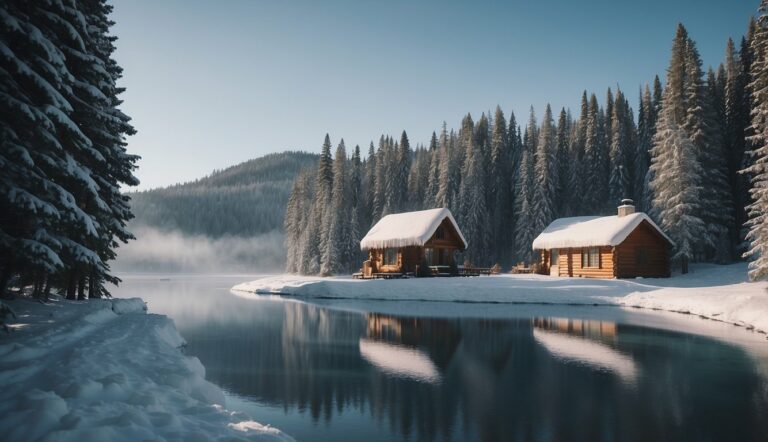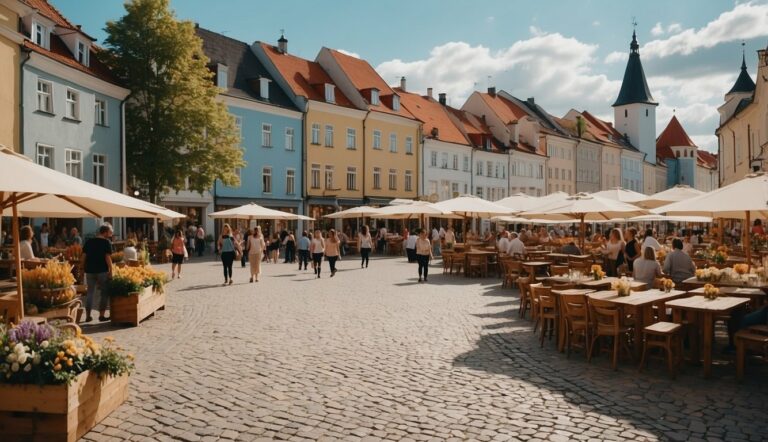A Guide to Celebrating Christmas in Croatia
Christmas in Croatia is a celebration deeply rooted in tradition, reflecting the country’s rich cultural tapestry and the strong influence of its Catholic heritage. With most Croatians identifying as Catholics, the festive season is both a sacred religious period and a time for family, joy, and love.
Throughout Croatia, from the idyllic Adriatic coast to the historic cities of Zagreb and Dubrovnik, local customs and practices interweave to create a unique holiday experience.
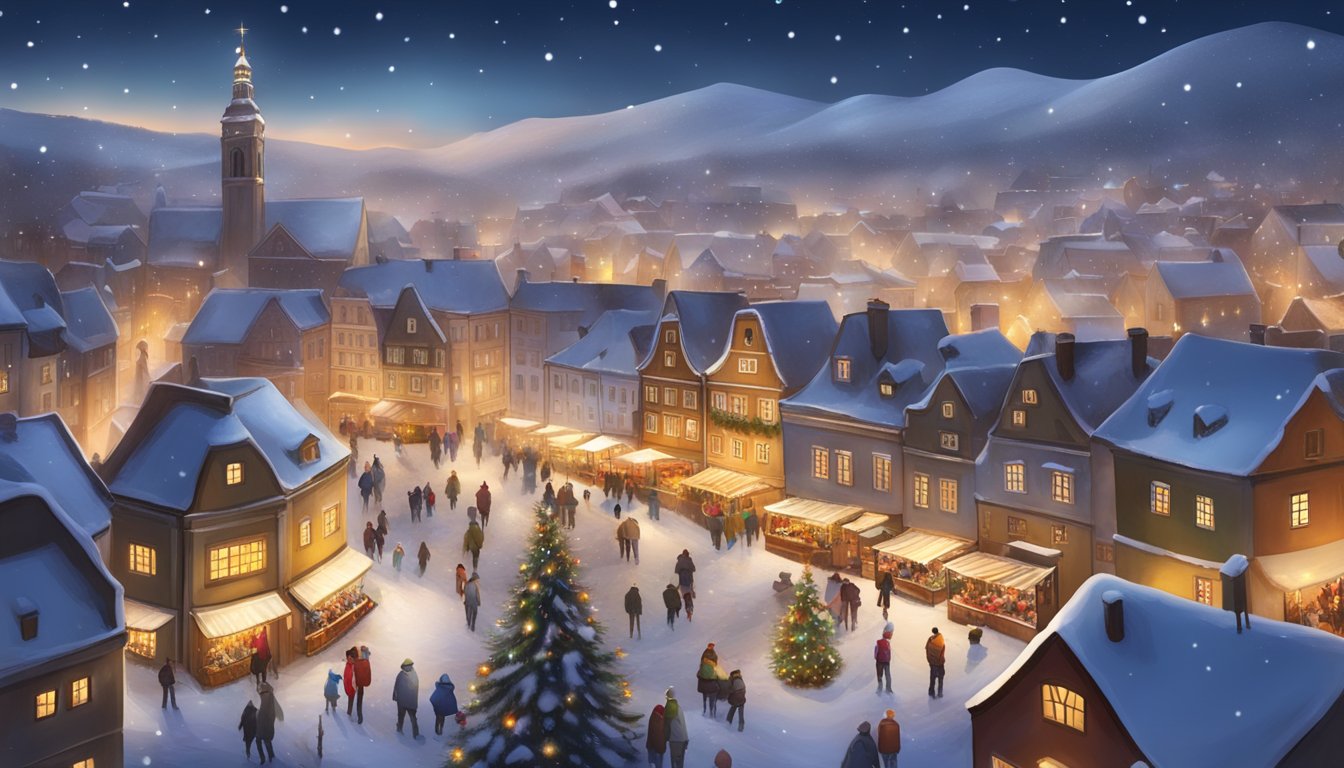
Croatian Christmas traditions are characterized by a series of events that begin in late November and extend until after New Year’s Eve. The preparations start with the Feast of St. Catherine on November 25th and continue through Advent, leading up to Christmas Day on December 25th.
Homes and public spaces sparkle with decorations and Advent wreaths as the air fills with the anticipation of the holiday season.
Families play a central role in these celebrations, gathering to share traditional foods and exchange gifts. The customs vary from region to region, featuring distinctive decorations, carolling, and midnight Mass—all reflecting the collective spirit of the Croatian people.
As travellers look to immerse themselves in authentic European Christmas experiences, Croatia offers a heartfelt welcome, inviting them to partake in the nation’s beloved yuletide customs.
History and Significance
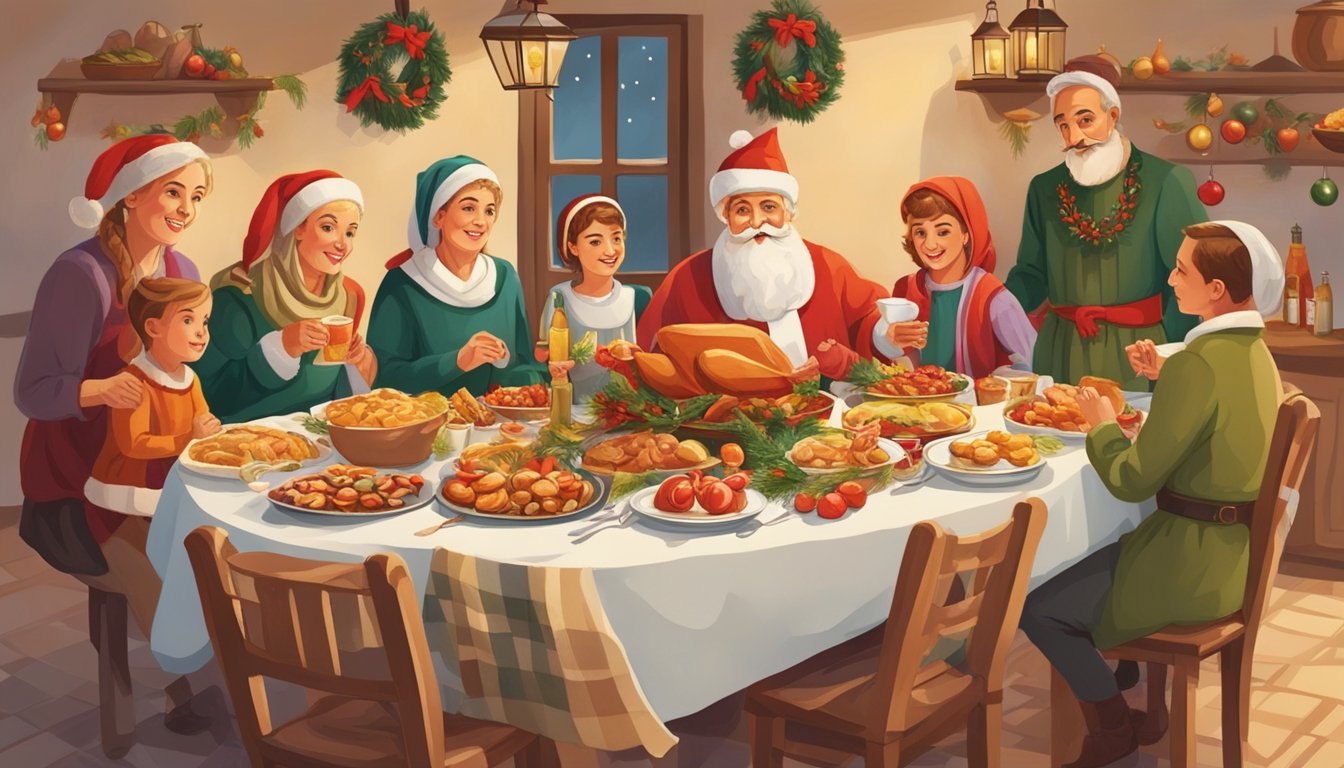
Christmas in Croatia is a rich tapestry woven from the country’s Christian heritage and traditions. The celebration of Christmas is deeply embedded in national customs and reflects a significant influence of Catholicism on Croatian society.
Origins of Croatian Christmas
Croatia’s Christmas traditions can be traced back to Christian origins, celebrating the birth of Jesus. With the spread of Christianity through Europe, the early Croatian settlers adopted these celebrations, transforming them into a blend of local customs and religious practices.
The traditions were further shaped by historical events and the mingling of cultures within the region. The creation of the Christmas celebration in Croatia was a gradual process, reflecting the country’s journey through its adaptation and adoption of Christian motifs.
The Influence of Catholicism
Catholicism in Croatia has played a pivotal role in shaping the Christmas celebrations. About 90 percent of Croatians identify as Catholic, which underpins the widespread observance of this holiday.
The faith emphasizes key aspects of Christmas, such as redemption and the Nativity story, which can be vividly seen in the prevalence of Nativity scenes throughout Croatia.
Croatian Christmas customs underscore Catholic values, including family togetherness and charity. These values have been crucial in maintaining and transmitting Christmas traditions through generations.
Catholicism’s emphasis on the Nativity, representing the humble beginnings of Jesus, is particularly poignant in Croatian celebrations. Not only are Nativity scenes common in homes and public squares, but they are also a central feature in many churches, reinforcing the story of the Birth of Jesus and its importance in Catholic teaching.
Pre-Christmas Preparations

In Croatia, the lead-up to Christmas is marked by rich traditions and elaborate home decorations. As Advent commences, homes transform with festive decor, and the scent of fresh pine from Christmas trees begins to permeate the air.
Advent Traditions
Advent in Croatia starts on the fourth Sunday before Christmas. Advent wreaths play a central role during this period.
They are commonly made of evergreen branches or straw, symbolizing eternal life, and are adorned with four candles representing hope, peace, joy, and love.
A new candle is lit each Sunday, with the first, typically purple, embodying hope.
Decorating the Home
As Christmas approaches, Croatian families dedicate time to decorating their homes. The use of red accents, often found in ribbons and other decorations, brings a pop of festive colour, evoking warmth and celebration.
Natural elements such as pinecones, holly, and ivy are frequently integrated into the decor, enhancing the connection with nature during the winter season.
Christmas Tree and Ornaments
Centering the home’s festive spirit is the Christmas tree, an evergreen adorned with a variety of ornaments and lights.
Families often decorate the tree together, draping it with strings of lights, garlands, and intricate baubles.
It is commonplace to find handmade decorations alongside store-bought ornaments, each adding a unique touch to the tree’s appearance.
The Christmas Eve Celebration
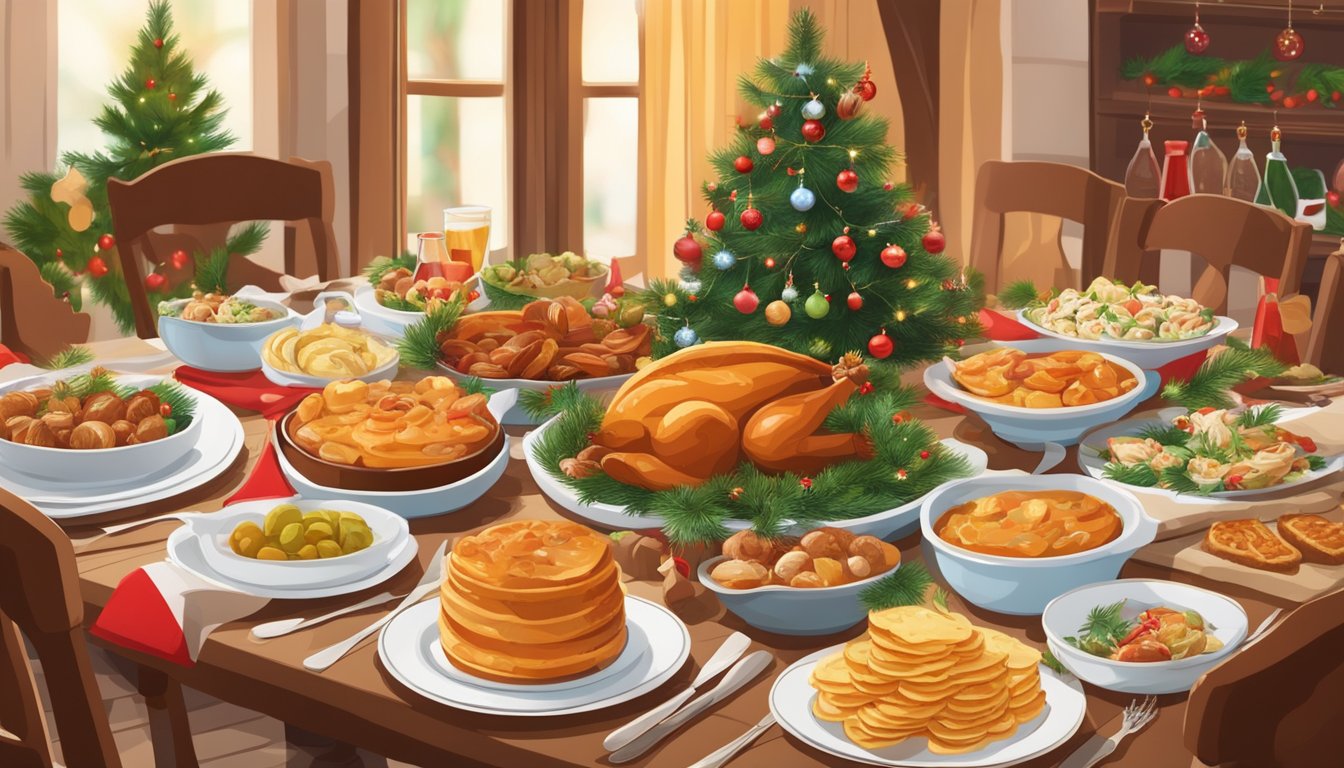
On Christmas Eve, Croatians partake in rich traditions that blend religious symbolism with familial bonds, marking the advent of Christmas with specific customs and festive fare.
Badnjak and Family Gatherings
Badnjak—a log selected and brought into the home on Christmas Eve—serves a central role in Croatian Christmas Eve customs.
Family members gather as the Badnjak is ceremoniously placed into the fireplace, reminiscent of the warmth and light that symbolize the arrival of Jesus.
The evening is often punctuated with the glow of candles, creating a serene atmosphere as families congregate in anticipation of the festive occasion.
Homes are traditionally adorned with straw under the tablecloth to symbolize the manger where Jesus was born.
The presence of Christmas wheat, sprouted from St. Lucy’s Day, symbolizes life, fertility, and prosperity.
It is often tied with red, white, and blue ribbons—the colours of the Croatian flag—and placed prominently as a decoration.
Traditional Christmas Eve Foods
Christmas Eve in Croatia is associated with fasting; thus, meat is notably absent from the dinner table.
Instead, the feast centres around fish, with cod being a popular choice. The cod is typically prepared “na bijelo,” meaning in white wine sauce, or as a stew called “bakalar.”
Another popular treat is Fritule. Small doughnut-like pastries are an everyday sweet treat during the holiday season.
This fast is broken after midnight mass, paving the way for more abundant feasting on Christmas Day.
The Christmas Eve meal is an intimate gathering that is the prelude to the more significant Christmas celebrations, deeply anchored in Christian faith and the joy of family unity.
Christmas Traditions in Croatia

Christmas in Croatia is a time when age-old traditions take centre stage as families and communities come together to celebrate. Here, the customs range from the culinary delights on the Christmas table to solemn religious practices.
Gift-Giving Practices
In Croatia, St. Nicholas (Sveti Nikola) plays a significant role in the gift-giving tradition, delivering presents to children on the eve of his feast day, December 5th.
Children polish their boots and leave them on the windowsills in anticipation of gifts. Giving gifts also extends to Christmas Day, reflecting a blend of religious reverence and festive merriment.
Christmas Day Meals
The Christmas Day feast is the heart of the celebration, featuring a variety of dishes with pork and turkey as common centrepieces.
Sarma is a cherished festive dish of cabbage rolls stuffed with minced meat. Sweets like Fritule, a type of doughnut, also grace the table, adhering to the Croatian Christmas essence.
Religious Observances
Religious devotion during Christmas is profound in Croatia. The faithful often attend Midnight Mass, a pivotal service that marks the culmination of the Advent period.
The following day, St. Stephen’s Day, is also observed with respect, gathering families for continued celebration and reflection on the season’s religious importance.
Culinary Delights of Christmas
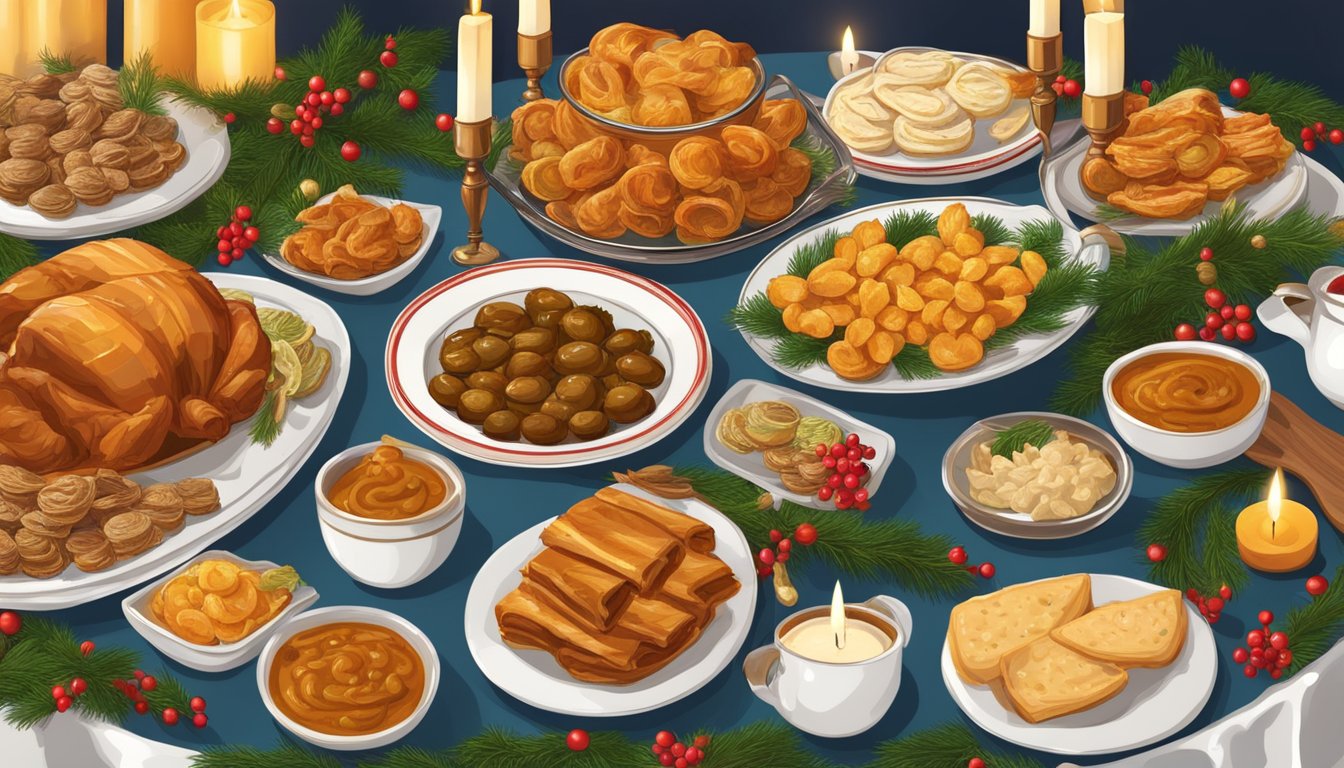
Celebration tables in Croatia brim with festive flavours, reflecting a rich gastronomic heritage. Christmas Day is particularly special, featuring an array of succulent meats, traditional sides, and delectable desserts, often paired with local wines that complement the meal.
Main Dishes and Sides
In Croatian Christmas tradition, main dishes vary by region but commonly centre around roasted meats such as turkey, lamb, duck, or the favoured suckling pig.
These are typically seasoned with fragrant herbs and served with a variety of side dishes.
Potatoes are often a staple, either roasted in the meat’s juices or as part of a more decadent dish.
Mlinci, thin dried flatbreads, are rehydrated and baked with pan juices from the roast, serving as a cherished accompaniment.
Alongside these, one may find sarma and cabbage rolls stuffed with meat and rice, simmering in a savoury sauce that warms any festive gathering.
Sweet Treats and Desserts
The sweetness of Christmas in Croatia shines through its selection of cookies and cakes.
A staple dessert is Makovnjača, a poppy seed roll that intertwines the rich taste of poppy seeds with hints of raisins and honey, embodying the holiday’s spirit in each slice.
Croatian festive tables also showcase a wide range of cookies, each bite resonating with the joyful holiday mood.
These are not just delicious but also boast intricate designs, often lovingly prepared days in advance.
Desserts frequently feature the nutty flavours of walnuts and almonds, and for many, Christmas wouldn’t be complete without the taste of these traditional confections paired with a glass of wine, echoing the season’s merriment.
Post-Christmas Rituals
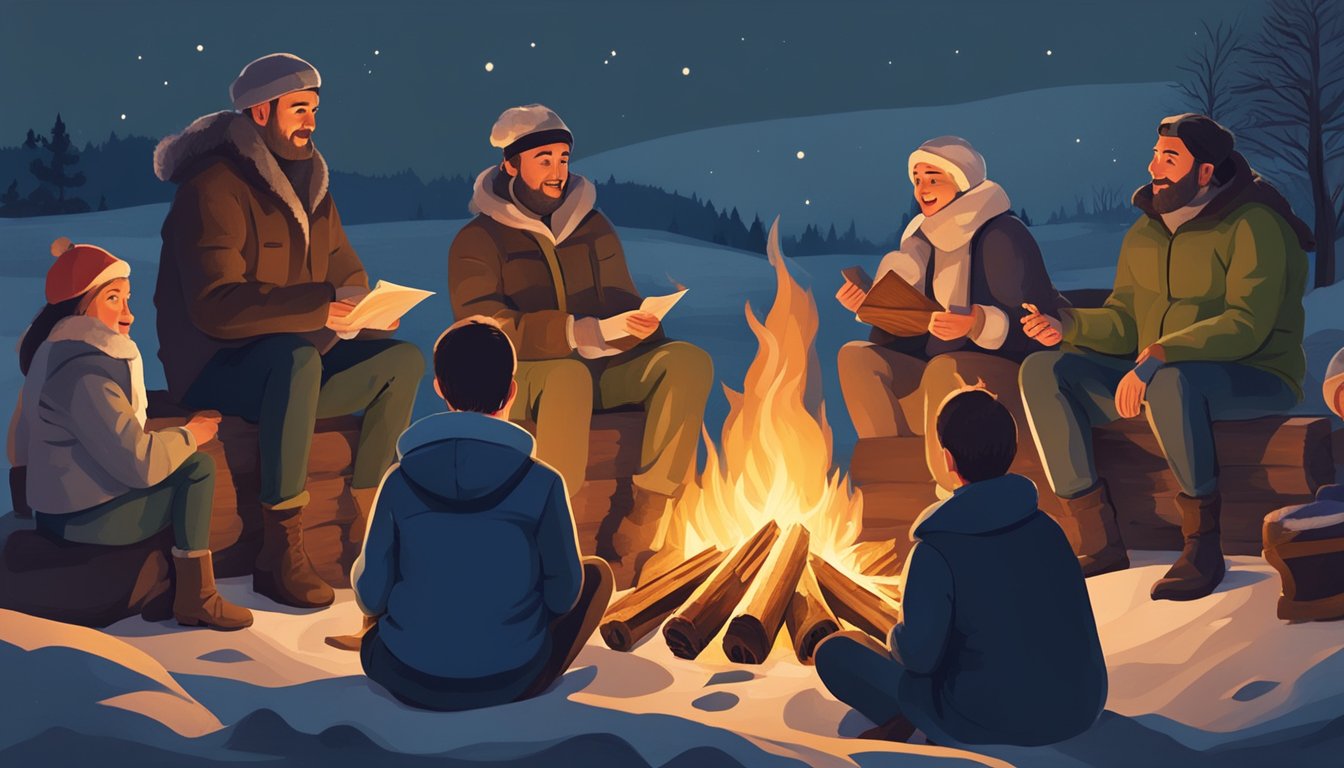
After the festivities of Christmas Day, Croatian traditions continue with special rituals that mark the end of the holiday season and welcome the New Year.
Epiphany and Customs
Epiphany, held on January 6th, is a significant day in the Croatian post-Christmas calendar. It commemorates the visit of the Holy Three Kings to the baby Jesus and marks the official end of the Christmas season.
Locals may attend church services, and some participate in processions or reenactments.
Homes are often blessed with holy water, and it is also common to inscribe the initials of the three wise men (C+M+B, standing for Caspar, Melchior, and Balthazar) above doorways, symbolizing both the Holy Three Kings and the phrase “Christus mansionem benedicat” which means “May Christ bless this house.”
Continuing the Festive Spirit
The period after Christmas and leading up to New Year’s Eve remains festive, with an emphasis on love and joy among family and friends.
New Year’s Eve, or “Silvester”, as often referred to in Croatia, is celebrated with fireworks, gatherings, and concerts. Croatians bid farewell to the old year and welcome the new with hope and celebration.
Christmas Markets and Events
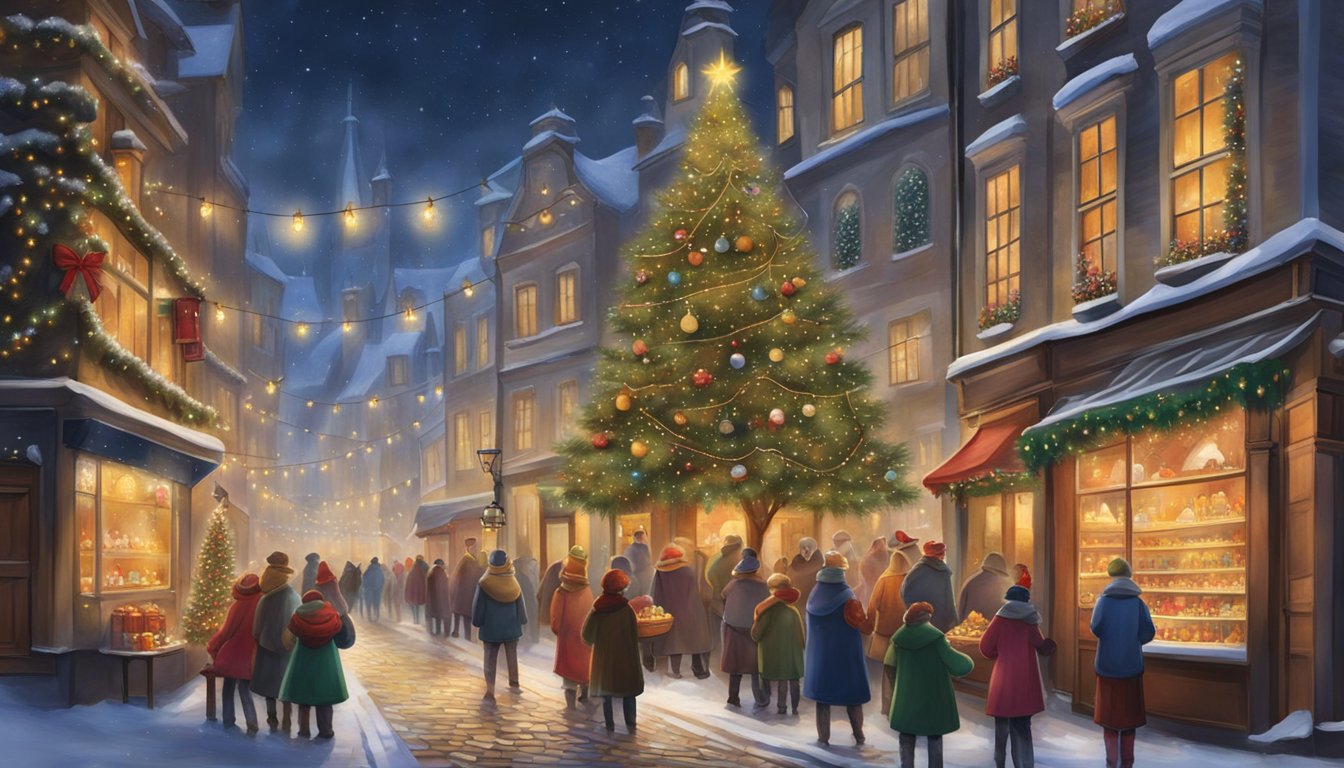
In Croatia, Christmas markets and events become the pulsing heart of the festive season, highlighted by an array of lights, traditional decorations, and cultural performances.
They offer a stunning display of Croatian winter traditions and crafts.
Zagreb Christmas Market
Zagreb’s Christmas Market, locally known as Advent Zagreb, is the centrepiece of Croatia’s holiday festivities.
Zagreb transforms into a Christmas wonderland with Christmas lights twinkling through the cityscape.
Ban Jelačić Square and Zrinjevac Park are adorned with illuminated Christmas trees and stalls brimming with holiday crafts.
Visitors enjoy a variety of activities, from ice skating to live music, which encapsulate the joyous spirit of the season.
Regional Celebrations
Beyond the capital, regional markets offer their unique take on the holiday spirit.
Each Christmas Market proudly displays local artisans’ work and culinary delights.
Towns across Croatia are illuminated by Christmas lights, creating a cosy atmosphere for festive shopping and celebrations.
In some regions, mythical figures like Krampus are part of the holiday lore, featured in parades and events.
The Zvjezdari, or stargazers, are an integral part of the preparations for Christmas, leading processions and ceremonies that enrich the holiday experience.
Regional Highlights:
- Dubrovnik: Renowned for its holiday market offering a blend of tradition and coastal charm.
- Rijeka: Hosts an array of events, including concerts and artisan markets.
- Split: Combines Diocletian Palace’s ancient backdrop with festive stalls and entertainment.
Modern Celebrations and Symbols

In Croatia, Christmas festivities blend longstanding traditions and contemporary practices with recognizable symbols that embody the holiday’s spirit and significance.
Influence of Global Traditions
Amidst the enduring customs, Croatians have embraced elements of global Christmas practices.
The Christmas Tree has become a universal symbol of the season, often adorned with red ribbons, apples, and strings of lights, turning homes into festive focal points.
Santa Claus is eagerly anticipated by children, who leave their shoes out on the eve of St. Nicholas Day in the hopes of finding them filled with treats such as chocolate and small gifts the following morning.
The symbolism of Christmas in Croatia
Croatian Christmas is rich with unique symbolism that speaks to the heart of its cultural heritage.
Straw is traditionally spread under the dinner table as a reminder of Jesus’s manger.
Hand-painted Licitar hearts, a recognized Croatian craft, often find their place amongst the decorations, symbolizing love and affection.
Holy water may be used to bless the home and the feast, reflecting the deeply rooted religious significance of the holiday.
These symbols, alongside family gatherings and the sharing of special dishes like poppy seed rolls (makovnjača), are the essence of Christmas in Croatia.
Frequently Asked Questions
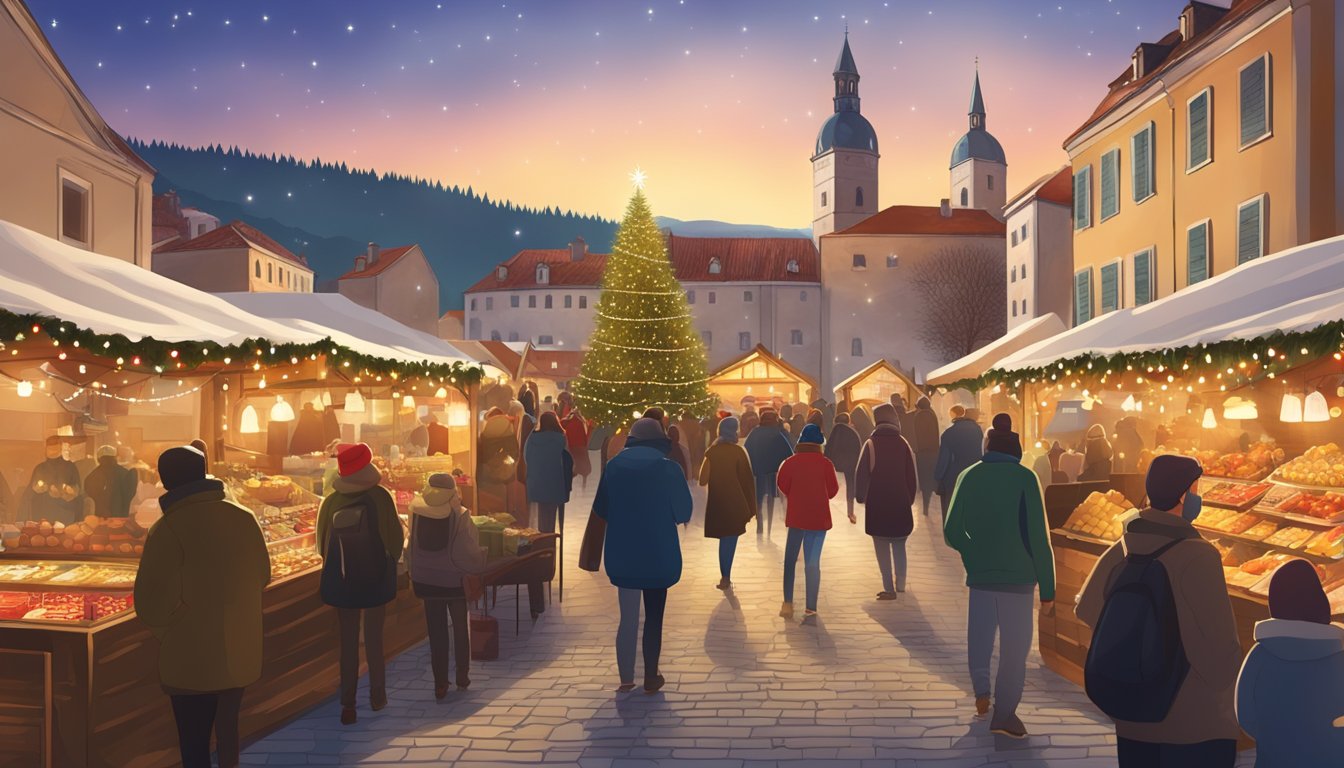
What are some traditional Croatian Christmas foods?
Traditional Croatian Christmas foods include dishes like ‘bakalar’ (dried codfish), ‘sarma’ (cabbage rolls filled with minced meat), and various types of cookies such as ‘kiflice’ (crescent-shaped pastries).
The Christmas Eve dinner often features fish and other seafood, reflecting Catholic fasting traditions before the feast.
How is Christmas traditionally celebrated in Croatia?
Christmas in Croatia is celebrated with a mixture of religious and secular customs.
The festivities begin with Advent, leading to Christmas Eve when families attend Midnight Mass.
Christmas Day is a family-oriented holiday with gift exchanges, and the celebration often extends to St. Stephen’s Day on December 26.
What are typical Christmas decorations in Croatia?
Homes in Croatia are typically adorned with evergreen branches, candles, and ‘adventski vijenci’ (Advent wreaths).
Public spaces often feature elaborate light displays, and Christmas trees are commonly decorated with ornaments, lights, and a star or angel on top.
Where are popular destinations in Croatia to visit during the Christmas season?
During the Christmas season, popular destinations in Croatia include the capital city of Zagreb, known for its award-winning Christmas market, and the coastal city of Split, where the Diocletian’s Palace provides a historical backdrop for festive celebrations.
Dubrovnik is another favourite, with its medieval walls and Christmas market.
What is the typical weather in Croatia around Christmas time?
Around Christmas time, Croatia typically experiences cold weather with chances of snow, especially in inland areas.
The coastal regions have milder winters but can still be chilly with a brisk sea breeze.
How do Croatians say ‘Merry Christmas’, and what are some common holiday greetings?
Croatians say ‘Merry Christmas’ as ‘Sretan Božić.’
Other common holiday greetings include ‘Sretni blagdani’ which means ‘Happy Holidays,’ and ‘Sretna Nova Godina,’ which translates to ‘Happy New Year.’
These expressions are widely used to share festive cheer during the holiday season.
